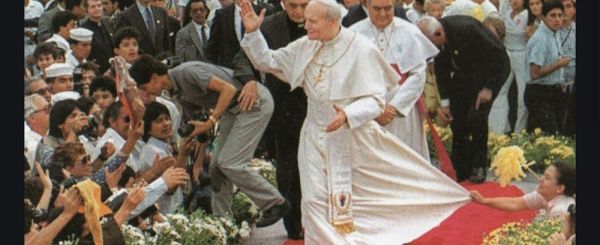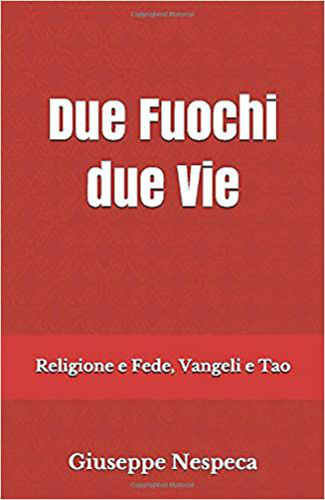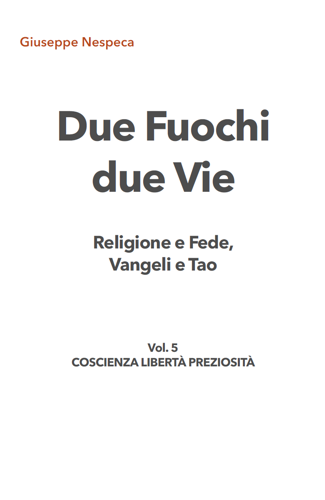"And who do you say that I am?" (Mt 16:15).
1. As we begin the cycle of catechesis on Jesus Christ, of fundamental importance for Christian faith and life, we feel challenged by the same question that almost two thousand years ago the Master asked Peter and the disciples who were with him. At that decisive moment of his life, as Matthew, who witnessed it, recounts in his Gospel, "When Jesus had come to the region of Caesarea Philippi, he asked his disciples, 'People, who do they say that the Son of Man is?' They answered, 'Some say John the Baptist, others Elijah, others Jeremiah or any of the prophets.' He said to them, 'Who do you say that I am?'" (Mt 16:13-15).
We know Peter's blunt and impetuous reply: "You are the Christ, the Son of the living God" (Mt 16:16). In order for us too to formulate it, not so much in abstract terms, but as an expression of a vital experience, the fruit of the Father's gift (cf. Mt 16:17), each of us must allow ourselves to be personally touched by the question: "And you, who say, who am I? You who hear of me, answer: what am I really to you?". For Peter, divine illumination and the answer of faith came after a long period of being close to Jesus, listening to his word and observing his life and ministry (cf. Mt 16:21-24).
In order to come to a more conscious confession of Jesus Christ, we too must walk, like Peter, a path of attentive, caring listening. We must put ourselves in the school of the first disciples, who became his witnesses and our teachers, and at the same time absorb the experience and testimony of twenty centuries of history marked by the Master's question and enriched by the immense chorus of responses from the faithful of all times and places. Today, as the "Lord and Life-giving" Spirit pushes us towards the threshold of the third Christian millennium, we are called to give with renewed joy the response that God inspires and expects from us, almost as if for a new birth of Jesus Christ in our history.
2. Jesus' question about his identity shows the pedagogical subtlety of one who does not trust in hasty answers, but wants an answer matured through a time, sometimes a long time, of reflection and prayer, in attentive and intense listening to the truth of the Christian faith professed and preached by the Church.
Indeed, we recognise that in the face of Jesus we cannot be content with a merely human sympathy, however legitimate and precious, nor is it sufficient to consider him merely as a character worthy of historical, theological, spiritual or social interest, or as a source of artistic inspiration. Around Christ we often see hovering, even among Christians, the shadows of ignorance, or the even more distressing ones of misunderstanding or even infidelity. There is always the risk of appealing to the 'Gospel of Jesus', without really knowing its greatness and radicality, and without living out what is claimed in words. How many are those who reduce the Gospel to their own measure and make themselves a more comfortable Jesus, denying his transcendent divinity, or nullifying his real, historical humanity, or manipulating the integrity of his message, in particular by not taking into account the sacrifice of the cross that dominates his life and doctrine, nor the Church that he instituted as his 'sacrament' in history.
Even these shadows stimulate us to search for the full truth about Jesus, taking advantage of the many lights that, as once with Peter, the Father has lit up over the centuries around Jesus in the hearts of so many men with the power of the Holy Spirit: the lights of faithful witnesses even to martyrdom; the lights of so many passionate scholars, committed to fathoming the mystery of Jesus with the instrument of intelligence sustained by faith; the lights that above all the Magisterium of the Church, guided by the charisma of the Holy Spirit, has lit up in the dogmatic definitions of Jesus Christ.
We recognise that a stimulus to discover who Jesus really is is present in the uncertain and anxious search of many of our contemporaries so similar to Nicodemus who went "by night to find Jesus" (Jn 3:2) or Zacchaeus who climbed a tree to "see Jesus" (Lk 19:4). The desire to help every man to discover Jesus, who came as a doctor for the sick and as a saviour for sinners (cf. Mk 2:17), urges me to perform the demanding and exciting task of presenting the figure of Jesus to the children of the Church and to every man of good will.
You may remember that, at the beginning of my pontificate, I addressed an invitation to the people of today to "open wide the doors to Christ" (Insegnamenti di Giovanni Paolo II, I [1978] 38). Later, in the exhortation Catechesi Tradendae (Ioannis Pauli PP. II, Catechesi Tradendae, 5), dedicated to catechesis, making myself the spokesman for the thinking of the bishops gathered in the Fourth Synod, I affirmed that "the essential and primordial object of catechesis is . . the 'mystery of Christ'. To catechise is in a certain way to lead one to scrutinise this mystery in all its dimensions . . .; to unveil in the person of Christ the whole eternal plan of God, which is fulfilled in him . . . He alone can lead us to the love of the Father in the Holy Spirit and can make us participate in the life of the Holy Trinity' (Eiusdem, Catechesi Tradendae, 5).
We will follow this catechetical itinerary together, ordering our considerations around four focal points: 1) Jesus in his historical reality and in his transcendent messianic quality, son of Abraham, son of man and son of God; 2) Jesus in his identity as true God and true man, in profound communion with the Father and animated by the power of the Holy Spirit, as presented to us in the Gospel; 3) Jesus in the eyes of the Church, which with the assistance of the Holy Spirit has clarified and deepened the revealed data giving us, especially with the Ecumenical Councils, precise formulations of the Christological faith; 4) finally, Jesus in his life and works, Jesus in his redemptive passion and glorification, Jesus among us and in us, in history and in his Church until the end of the world (cf. Mt 28, 20).
3. It is true that in the Church there are many ways of catechising God's people about Jesus. Each one, however, to be authentic must draw its content from the perennial source of holy Tradition and sacred Scripture, interpreted in the light of the teachings of the Fathers and Doctors of the Church, the liturgy, popular faith and piety, in a word of the Tradition living and working in the Church under the action of the Holy Spirit, who - according to the Master's promise - "will lead you into all truth, for he will not speak of himself, but will say all that he has heard and will proclaim to you the things to come" (Jn 16:13). This Tradition we recognise expressed and synthesised particularly in the doctrine of the sacrosanct Councils, gathered in the symbols of faith and deepened by theological reflection faithful to Revelation and the Magisterium of the Church.
What would a catechesis on Jesus be worth if it did not have the genuineness and completeness of the gaze with which the Church contemplates, prays and proclaims his mystery? On the other hand, a pedagogical wisdom is required that, in addressing the recipients of catechesis, knows how to take into account their conditions and needs. As I wrote in the exhortation now cited, Catechesi Tradendae: 'The constant concern of every catechist - whatever the level of his or her responsibilities in the Church - must be to pass on the doctrine and life of Jesus through his or her teaching and behaviour' (John Paul II, Catechesi Tradendae, 6).
4. Let us conclude this introductory catechesis by recalling that Jesus, at a particularly difficult moment in the life of the first disciples, when the cross loomed close and many were abandoning him, addressed to those who had remained with him another of those questions of his that were so strong, so penetrating and inescapable: "Do you perhaps also wish to leave?" It was Peter again who, as the interpreter of his brothers, answered: "Lord, to whom shall we go? You alone have words of eternal life. We have believed and known that you are the Holy One of God" (Jn 6:66-69). May these catechetical appointments of ours make us ever more willing to allow ourselves to be questioned by Jesus, able to have the right answer to his questions, ready to share his life to the full.
[Pope John Paul II, General Audience 7 January 1987]












